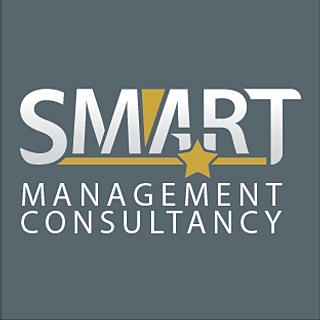Facility Engineering & Maintenance Management: A Strategic Necessity
- Smart Management Consultancy
- Jul 29
- 4 min read
Updated: Aug 7
1. Preventive Maintenance Schedules: The Core of System Reliability
Preventive Maintenance (PM), particularly Periodic Preventive Maintenance (PPM), is a strategic discipline. It proactively mitigates risks by anticipating mechanical failure before it disrupts operations. PPM is not optional; it is a regulatory, ethical, and risk-based imperative.
A professional Periodic Preventive Maintenance Program must include:
A detailed equipment register linked to a maintenance management system. This should include location, asset ID, manufacturer, model, risk class, acquisition date, and maintenance history.
Maintenance frequency tailored to equipment criticality. For example, weekly generator tests, monthly HVAC filters, quarterly plumbing and fire system inspections, and semiannual elevator safety audits.
Defined PM procedures standardized by manufacturer guidance and regulatory codes. This includes NHRA mandates for healthcare facilities and HVAC, and fire safety as per Civil Defense.
Checklists signed electronically with technician ID and supervisor verification.
Predictive maintenance integration based on data analytics, such as vibration, pressure, and temperature patterns.
KPIs: PPM compliance rate (%), mean time between failures (MTBF), and asset uptime rate.

2. Asset Management: Lifecycle Oversight and Infrastructure Integrity
Healthcare infrastructure includes hundreds of physical and mechanical systems. The accountability for their lifecycle acquisition, operation, maintenance, and decommissioning falls under asset management. Failure to manage these assets increases liability, energy waste, and patient risk.
Key components include:
HVAC Systems: Ensure positive/negative pressure in ORs and isolation rooms. Calibrate thermostats quarterly, clean ducts biannually, and validate air exchange rates as per the Center for Disease Control (CDC) USA or national standards.
Water Systems: Conduct annual Legionella testing, backflow preventer inspections, tank chlorination every six months, plumbing leak audits, and cold/hot water temperature monitoring.
Elevators: Perform monthly safety checks, door pressure testing, intercom reliability testing, and load test certification by third-party vendors annually. Ensure emergency recall functionality.
Electrical Systems: Conduct weekly generator testing, battery system checks, and coordinate with UPS for uninterrupted power in critical care areas.
Facility Layout and Drawings: Ensure up-to-date as-built drawings are archived and accessible during emergencies.
3. Biomedical Equipment Safety: The Technological Lifeline of Clinical Care
Biomedical equipment failure can result in direct harm to patients. Therefore, healthcare organizations must establish a Medical Equipment Management Plan (MEMP) that classifies devices by risk and ensures traceable maintenance activities. Critical practices include:
A centralized inventory of all biomedical assets, such as infusion pumps, patient monitors, and defibrillators, with unique asset IDs.
Compliance with NHRA and ISO 13485 requirements for maintenance intervals, calibration accuracy, and documentation.
Contracted vendors should be ISO-certified or NHRA-licensed, with documented SLAs.
Every item should have a visible status tag: "In-Service," "Out-of-Service," "Under Maintenance," or "Condemned."
Documentation of electrical safety testing and functional performance checks.
Regular training for biomedical engineers on manufacturer updates and recalls.
4. Downtime Protocols and Business Continuity Planning
Even with robust maintenance, system failures may occur. Downtime protocols are the last defense before risk becomes harm. Facilities must implement and regularly test contingency measures to protect clinical continuity. Effective downtime strategies include:
A Business Continuity Plan (BCP) that categorizes critical systems:
- Class A: life support systems
- Class B: diagnostic support
- Class C: administrative
Clear fallback mechanisms: manual registers during HIS downtime, manual transfer in elevator outages, mobile lighting for power loss, and hand-pumped oxygen systems.
Emergency SOPs are displayed in engineering control rooms and communicated to clinical staff.
An Incident Command System (ICS) with defined roles: Engineering Lead, Safety Officer, Communication Officer, and Facility Director.
Real-time event logging and RCA (Root Cause Analysis) post-event.

5. Quality Assurance and Internal Compliance Monitoring
Quality Assurance (QA) in Facility Engineering & Maintenance Management (FEMM) is an ongoing process of measurement, feedback, and improvement. Without QA mechanisms, even the best-written maintenance program can drift into complacency.
Establish a QA framework with:
Monthly PM and Maintenance Management System (MMS) data reviews by the safety officer and facility director.
Quarterly internal audits using NHRA, CBAHI, GAHAR, JCI, or Accreditation Canada facility safety standards/criteria.
Staff performance dashboards: % of tasks completed on time, technician skill matrix, and emergency response time.
Risk-based escalation: any skipped PPM for Class A equipment triggers leadership notification and contingency review.
The Facility Management Committee (FMC) reviews every three months to analyze downtime reports, safety issues, and PPM trends.
Red Flags and Compliance Risks
Facility managers and safety officers must remain vigilant against red flags that indicate systemic breakdowns:
Skipped maintenance logs or falsified documentation.
Equipment used beyond calibration or expired service tags.
Inaccessible asset inventory or untagged items.
No documentation of emergency drills or downtime testing.
Staff are unaware of facility emergency protocols.
Lack of annual review or performance KPIs for engineering services.
Final Strategic Advisory
Facility Engineering & Maintenance Management is not a technical silo; it is a strategic pillar that ensures safe care, meets accreditation demands, reduces liability, and safeguards reputation. Leaders must embed FEMM in the governance framework, give it board-level visibility, and allocate resources to ensure its excellence.
At SMART Management Consultancy, we support healthcare organizations in designing, auditing, and improving their engineering management systems in line with NHRA, CBAHI, GAHAR, JCI, Accreditation Canada, and international best practices. It is a non-negotiable rule: Safe care starts with safe systems.
For more information, contact us via WhatsApp: +973 36077750 or email us at info@smartmcbh.com. Visit our website at www.smartmcbh.com.















Comments